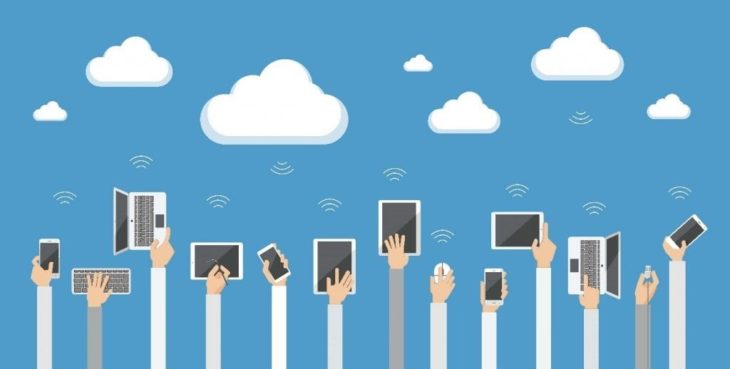Cloud computing is the future of IT, and its systems are structured for business and research purposes. It is swiftly becoming a standard for tech companies to access infrastructure, software or hardware resources, enabling businesses to use apps from 3rd party companies that are being stored on high-end servers and networks. We’ll talk about different cloud computing options.
First of all, let’s explain “cloud.” It stands for software or hardware that is being stored remotely, where companies or individuals did not buy or set up servers or hardware/software to run them. It is an efficient way to save software and hardware in your space for more important things so that companies don’t have to increase functionality and capacity in their IT department.

Source: Information Age
Here are the main types:
Contents
IaaS or Infrastructure as a Service
Most of the web hosting companies are IaaS providers, like Google, IBM, Amazon, Verizon, etc. It is the lowest level of cloud computing since it is a fully outsourced service. Trough a virtual interface, providers will deliver pre-installed hardware and software, and everything else is up to customers. You just have to pay for service, and that’s it. You’ll have access to enterprise-grade infrastructure, reducing the total cost of ownership and expenditures, plus you can upgrade or improve service at any time.
PaaS or Platform as a Service
If you are a company that needs to develop, collaborate, test and deploy cloud solutions for apps, Paas is a great option. Providers can offer a deployment environment and fully configured sandbox for that purpose. The best examples are Google App Engine, Microsoft Azure, Force.com and so on. PaaS is an advanced version of Iaas. Aside from providing Infrastructure that may come with interface, system libraries and OS, the PaaS offers computing platform and solution stack. You won’t have to make big investments in hardware and software, and you are not required to update and upgrade software or infrastructure. Developers can focus only on deploying cloud apps. But be careful since hosting is done by the PaaS provider.
SaaS or Software as a Service
This is what most people think of when they say cloud service since this type is a fully functional, on-demand, web-based app. Targeted for business utility, for emails, project tracking, web conferencing, ERP and CRM, etc. There are free, pay to use or subscription-based solutions. And the best examples are Citrix, Salesforce, NetSuite, and WebEx. It is highly adaptable, and accessible from any location, and no need for worries about infrastructure, maintenance or support.

Source: Simplilearn
Raas or Recovery as a Service
RaaS, also known as DRaaS (D standing for Disaster) is a single integrated platform solution that offers protection, recovery, and replacement for backup, archiving and so on. It can help recover servers, files, and databases, OS, apps and reduces the downtime impact when a disaster happens. It is the most beneficial cost-effective way of recovering data and improving efficiency.
Cloud service can cost a few dollars per month, depending on your needs. Some of them you can check at Couchbase. And it takes around a few minutes for set-up. And accessing cloud service is easy, it can be done from any device. If your needs grow, you can choose a bigger plan (same is possible if you need to shrink it) There are literary no reasons why not to use a cloud service. Excellent for start-ups who don’t own much space. No better cost-effective solution!
